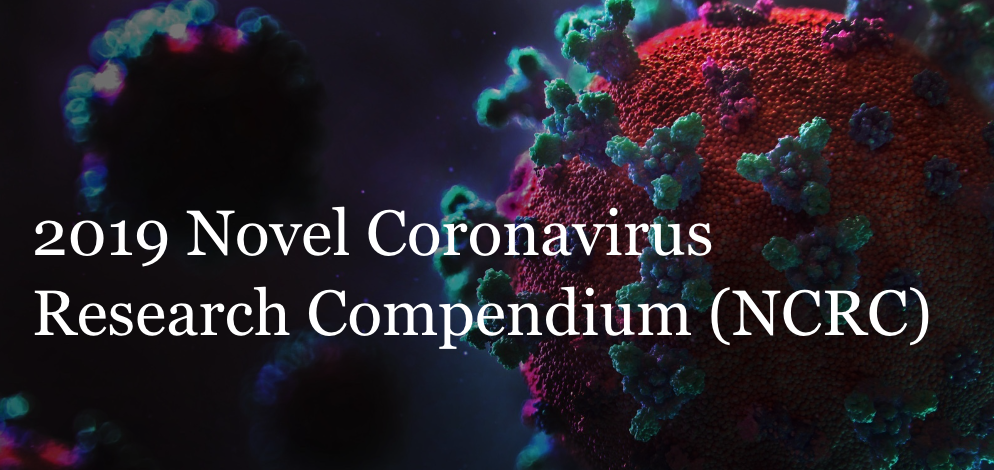Symptomatic Severe Acute Respiratory Syndrome Coronavirus 2 Reinfection of a Healthcare Worker in a Belgian Nosocomial Outbreak Despite Primary Neutralizing Antibody Response
This article has been Reviewed by the following groups
Discuss this preprint
Start a discussion What are Sciety discussions?Listed in
- Evaluated articles (ScreenIT)
- Evaluated articles (NCRC)
- High interest articles (NCRC)
Abstract
Background
It is currently unclear whether severe acute respiratory syndrome coronavirus 2 (SARS-CoV-2) reinfection will remain a rare event, only occurring in individuals who fail to mount an effective immune response, or whether it will occur more frequently when humoral immunity wanes following primary infection.
Methods
A case of reinfection was observed in a Belgian nosocomial outbreak involving 3 patients and 2 healthcare workers. To distinguish reinfection from persistent infection and detect potential transmission clusters, whole genome sequencing was performed on nasopharyngeal swabs of all individuals including the reinfection case’s first episode. Immunoglobulin A, immunoglobulin M, and immunoglobulin G (IgG) and neutralizing antibody responses were quantified in serum of all individuals, and viral infectiousness was measured in the swabs of the reinfection case.
Results
Reinfection was confirmed in a young, immunocompetent healthcare worker as viral genomes derived from the first and second episode belonged to different SARS-CoV-2 clades. The symptomatic reinfection occurred after an interval of 185 days, despite the development of an effective humoral immune response following symptomatic primary infection. The second episode, however, was milder and characterized by a fast rise in serum IgG and neutralizing antibodies. Although contact tracing and viral culture remained inconclusive, the healthcare worker formed a transmission cluster with 3 patients and showed evidence of virus replication but not of neutralizing antibodies in her nasopharyngeal swabs.
Conclusions
If this case is representative of most patients with coronavirus disease 2019, long-lived protective immunity against SARS-CoV-2 after primary infection might not be likely.
Article activity feed
-
-

Our take
This study was published as a preprint and thus was not yet peer reviewed. In September 2020, a case of SARS-CoV-2 re-infection was observed in a healthy, Belgian healthcare worker in her 30s, despite a documented neutralizing antibody immune response following the first infection in March 2020. While both the primary and secondary infections were symptomatic and relatively mild, the second infection was characterized by a faster immune response and milder, less prolonged infection. Differences in the genetic sequences of the two infections, often unavailable amongst COVID-19 cases, support that these were two distinct infections. Further, at the time of the second infection, neutralizing antibodies were not detected in the nasopharyngeal swab of the health care worker, and it is likely that she was the transmission …
Our take
This study was published as a preprint and thus was not yet peer reviewed. In September 2020, a case of SARS-CoV-2 re-infection was observed in a healthy, Belgian healthcare worker in her 30s, despite a documented neutralizing antibody immune response following the first infection in March 2020. While both the primary and secondary infections were symptomatic and relatively mild, the second infection was characterized by a faster immune response and milder, less prolonged infection. Differences in the genetic sequences of the two infections, often unavailable amongst COVID-19 cases, support that these were two distinct infections. Further, at the time of the second infection, neutralizing antibodies were not detected in the nasopharyngeal swab of the health care worker, and it is likely that she was the transmission link between three other genetically linked cases within the hospital ward who had no contact with one another. These findings should be interpreted as an initial piece of evidence to help us understand how long protective immunity may last, as well as provide insights into the potential for transmission among reinfection cases to others, despite initial development of neutralizing antibodies. To date there have been 26 cases of re-infection clearly documented through genetic testing of both infections, each case providing new insights into the COVID-19 pandemic.
Study design
case-series
Study population and setting
This study describes a case of re-infection in a healthcare worker in Belgium in September 2020, along with the associated cases in a hospital-based outbreak in an internal medicine ward. Whole genome sequencing was conducted to distinguish between persistent infection and re-infection in the re-infected case, as well as to establish chains of transmission in the outbreak.
Summary of main findings
The re-infected healthcare worker (HCW) was female, young (30s), healthy, and immunocompetent. During her initial infection in March 2020, she had a mild but prolonged infection in which she presented with cough, fever, headache, malaise and labored breathing and was away from work for a month. Testing three months after infection demonstrated that she had developed neutralizing antibodies. The re-infection in September 2020 was also symptomatic. While the HCW was symptomatic in both instances, the second episode was more mild and there was a rapid immune response (fast rise in serum IgG and neutralizing antibodies). Of the four other people (3 patients and 1 healthcare worker) involved in the hospital outbreak in September 2020, the three patients shared a viral genome sequence similar to that of the re-infected healthcare worker, while the other healthcare worker appears to have been infected by an external transmission source. The sequences collected from the re-infected healthcare worker and the three patients closely resembled Belgian sequences obtained in the summer months, while the sequence from the re-infected healthcare worker from her March infection resembled sequences circulating at that time. In September, the re-infected healthcare worker’s initial nasopharyngeal swabs contained virus but no neutralizing antibodies and she was the primary point of contact that was infected across the patients, suggesting likely onward transmission, though no transmission to close contacts outside of the hospital was documented.
Study strengths
The use of whole genome sequencing, rather than a threshold number of days, allows for the cleaner distinction between re-infection and persistent infection (viral genomes are derived from different SARS-CoV-2 clades in the first and second episode). Also, because antibodies were measured 3-months post-initial infection, the authors were able to determine that the woman had at least initially developed neutralizing antibodies.
Limitations
Samples were not available from the HCW re-infected right before the second infection; thus it is not known whether the neutralizing antibodies previously measured had waned by this time (6 months post initial infection) or if they were present but just insufficient to prevent re-infection. Further, this is a single case and may not be representative of all patients with a primary COVID-19 diagnosis.
Value added
Description of this case can help us begin to understand how long protective immunity (even with an effective immune response) may last following a primary infection. These data also provide insights regarding the potential for transmission from re-infected cases to others.
-

SciScore for 10.1101/2020.11.05.20225052: (What is this?)
Please note, not all rigor criteria are appropriate for all manuscripts.
Table 1: Rigor
Institutional Review Board Statement IACUC: Sample collection and diagnosis: Sample collection and clinical evaluation were performed in view of diagnosis and standard of care and approved by the hospital’s ethical committee (EC/PM/nvb/2020.084).
Consent: Oral consent was obtained from all patients before sampling followed by written consent prior to publication.Randomization not detected. Blinding not detected. Power Analysis not detected. Sex as a biological variable not detected. Cell Line Authentication not detected. Table 2: Resources
Antibodies Sentences Resources SARS-CoV-2 specific antibody detection tests: The Elecsys electrochemiluminescence immunoassay on the Cobas 8000® analyzer (Roche Diagnostics, … SciScore for 10.1101/2020.11.05.20225052: (What is this?)
Please note, not all rigor criteria are appropriate for all manuscripts.
Table 1: Rigor
Institutional Review Board Statement IACUC: Sample collection and diagnosis: Sample collection and clinical evaluation were performed in view of diagnosis and standard of care and approved by the hospital’s ethical committee (EC/PM/nvb/2020.084).
Consent: Oral consent was obtained from all patients before sampling followed by written consent prior to publication.Randomization not detected. Blinding not detected. Power Analysis not detected. Sex as a biological variable not detected. Cell Line Authentication not detected. Table 2: Resources
Antibodies Sentences Resources SARS-CoV-2 specific antibody detection tests: The Elecsys electrochemiluminescence immunoassay on the Cobas 8000® analyzer (Roche Diagnostics, Belgium) was used for the qualitative detection of total antibodies against the Nucleocapsid (N) antigen of SARS-CoV-2. antigen of SARS-CoV-2.suggested: NoneFor the separate quantification of IgM, IgG, and IgA antibodies, we used a Luminex bead-based assay [27]. IgAsuggested: NoneExperimental Models: Cell Lines Sentences Resources SARS-CoV-2 viral neutralization test and virus isolation: Serial dilutions (1/50 - 1/1600) of heat-inactivated (30 min at 56°C) serum or nasopharyngeal samples were incubated with 3x TCID100 of a SARS-CoV-2 primary isolate (2019-nCoV-Italy-INMI1) for 1h at 37°C / 7% CO2 and subsequently added to 18.000 Vero cells per well for a further 5 days incubation. Verosuggested: CLS Cat# 605372/p622_VERO, RRID:CVCL_0059)Similarly, virus isolation was attempted by incubating a serial dilution of nasopharyngeal samples on VeroE6-TMPRSS2 cells after 2 hours of spinoculation at 2500g and 25°C and following up cytopathic effect. VeroE6-TMPRSS2suggested: JCRB Cat# JCRB1819, RRID:CVCL_YQ49)Software and Algorithms Sentences Resources Reads were aligned to the reference genome Wuhan-Hu-1 (MN908947.3) with Burrows-Wheeler Aligner (BWA-MEM) and a majority rule consensus was produced for positions with ≥100x genome coverage, while regions with lower coverage, were masked with N characters. BWA-MEMsuggested: (Sniffles, RRID:SCR_017619)Clade assignment was performed using NextClade v0.7.2 [26]. NextCladesuggested: NoneSequence alignment was performed using MAFFT v7 and a maximum likelihood phylogenetic tree was inferred with IQ-TREE v1.6.12., MAFFTsuggested: (MAFFT, RRID:SCR_011811)IQ-TREEsuggested: (IQ-TREE, RRID:SCR_017254)using the TIM2+F+I model and 500 nonparametric bootstraps, and visualized in FigTree v1.4.4. FigTreesuggested: (FigTree, RRID:SCR_008515)Results from OddPub: We did not detect open data. We also did not detect open code. Researchers are encouraged to share open data when possible (see Nature blog).
Results from LimitationRecognizer: An explicit section about the limitations of the techniques employed in this study was not found. We encourage authors to address study limitations.Results from TrialIdentifier: No clinical trial numbers were referenced.
Results from Barzooka: We did not find any issues relating to the usage of bar graphs.
Results from JetFighter: We did not find any issues relating to colormaps.
Results from rtransparent:- Thank you for including a conflict of interest statement. Authors are encouraged to include this statement when submitting to a journal.
- Thank you for including a funding statement. Authors are encouraged to include this statement when submitting to a journal.
- No protocol registration statement was detected.
-


